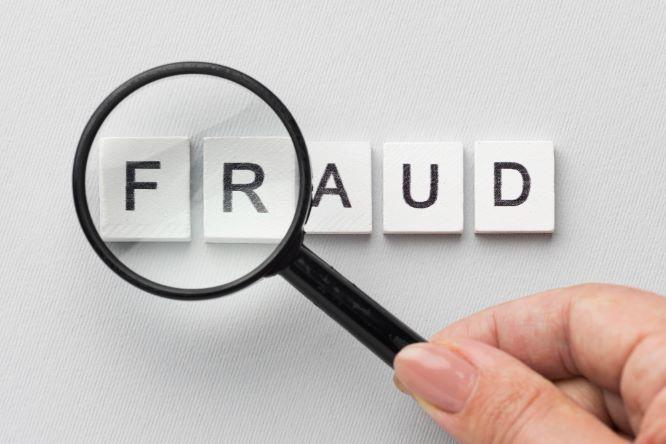The age of smart thieves and dumb systems
We are no longer chasing thugs in balaclavas or masks. Today’s fraudsters wear suits, manage bank accounts, and approve their payments. They don’t steal at night. They steal during working hours using the company Wi-Fi.
The problem? Many internal investigators are still using pens and notepads while the criminals are using AI, burner phones, mobile money layering, and VPNs. It’s like bringing a hoe to a drone war.
This is your forensic toolbox update. Catch Me If You Can is not just a taunt, it’s a test. And you better have the tools to pass it.
The new battleground, from files to firewalls
The fraudster’s playground has shifted. Yesterday, it was forged cheques. Today, it’s fake domain emails, insider ERP manipulation, and mobile money micro-thefts. The battlefield is digital. Your tools must be too.
At Summit Consulting Ltd, we equip our investigators with tools not just for documentation, but for digital confrontation.
Let me walk you through the must-haves.
The investigative arsenal. Tools that give you an unfair advantage
a) Device imaging kit
(i) Clone laptops and mobile phones without alerting the suspect.
(ii) Tools like FTK Imager, Autopsy, or Cellebrite UFED let you extract deleted emails, WhatsApp chats, browser histories, even from wiped phones.
b) Data analytics software
(i) Excel is for accountants. You need IDEA, R2, ACL Analytics, or Power BI to crunch suspicious payment patterns, round-figure transactions, and vendor duplications.
(ii) Load the full GL and run anomaly tests. One of our audits revealed a ghost vendor created by reversing and reissuing an invoice with only the last digit changed.
c) Metadata extractors
(i) A document’s fingerprint is in its metadata. Tools like ExifTool or DocParser tell you when a file was created, modified, or copied.
(ii) We once caught a “backdated” supplier contract that was created five days after the payment.
d) Open Source Intelligence (OSINT)
(i) Fraudsters leave digital footprints on Facebook, LinkedIn, and Twitter. Use Maltego, Recon-ng, or even basic Google dorking to link suspects to unregistered businesses, side gigs, or secret relationships.
(ii) We busted a procurement cartel by linking three supplier companies to one wedding photo on Instagram.
e) Mobile money forensic tracker
(i) Investigators must know how to trace cash through MTN MoMo and Airtel Money APIs.
(ii) Use IMEI and transaction logs to track layered transfers. One fraud we investigated involved UGX 10 million being split into 100 transactions of UGX 100,000 moved across agents and cashed out at fuel stations.
Essential non-digital tools: old school still rules
Fraud is personal. You still need tools that give you psychological and operational dominance.
a) Voice recorder and bodycam
(i) Always record interviews (discreetly, if your jurisdiction allows. In Uganda, this is not allowed unless you are a law enforcement officer with appropriate legal mandate). Liars forget their lies. Devices like the Spy Pen Recorder or hidden body cams are lifesavers.
b) Chain of custody logbook
(i) Evidence without custody is garbage. Every device, document, or digital copy must be logged with who accessed it, when, and for what purpose.
c) Investigator’s field notebook
(i) This is your Bible. Document every observation. Handwriting analysis, mood changes, and security patterns. One scribbled sentence can unlock a case.
d) Evidence bag kit
(i) Proper tamper-proof bags, labels, gloves, and evidence seals prevent contamination and maintain integrity.
Psychological warfare: tools that break suspects
A good investigator doesn’t just collect evidence. They extract the truth. That requires psychology.
a) DISC profiling and micro-expression training
(i) Learn to read people, blinking, fidgeting, and tone changes. We use DISC tools to profile personalities and tailor our interview style.
(ii) A Dominant suspect will push back. A Conscientious one will over-explain. Use their psychology against them.
b) Statement analysis software
(i) Tools like SCAN (Scientific Content Analysis) flag linguistic shifts, e.g., moving from “I” to “we” when describing responsibility.
(ii) In one case, a suspect shifted from “I paid” to “we paid” mid-interview. That’s how we knew he had a partner.
6) Investigation management tools: Organize or die
You’re not Sherlock Holmes. You can’t keep everything in your head. Use digital case management tools.
a) CaseHQ or CaseGuard
(i) These platforms let you manage files, link evidence, and tag suspects.
(ii) You create timelines, map networks, and log interview summaries, all in one place.
b) Digital chain of custody systems
(i) These log every file, image, or device collected. No more guesswork in court.
(ii) Timestamped, encrypted, tamper-proof.
The Summit edge tools we use to blow cases wide open
At Summit Consulting Ltd, our investigators use a unique triangulation framework:
Follow the money. Follow the behavior. Follow the device.
Let me show you a real case.
A client had UGX 320 million vanish from petty cash over 14 months. No one noticed. We used:
(i) Mobile money forensic analysis to trace staggered withdrawals.
(ii) Vendor network mapping to link five “independent” suppliers to the same PO Box.
(iii) Device imaging to recover an Excel file on the suspect’s desktop titled “Plan B Payroll”, a list of kickbacks by name and amount.
All this from just three tools. Case closed. Two arrests. Funds recovered.
Bonus tool: the fraud mindset
This cannot be bought. It must be cultivated.
The best investigators I’ve trained have one thing in common: they assume guilt and prove innocence. Not the other way around. They know that silence is a symptom, not a conclusion. They read between transactions, not just the transactions.
Fraud isn’t about the crime. It’s about the gap between what should have happened and what did.
You can’t fight fraud with hope
Hope is not an audit strategy. Faith is not an investigative tool. If your toolkit is older than your suspects’ Instagram filters, you’ve already lost.
Fraudsters evolve. So must you.
Equip your team with the full Fraud 360 toolkit. Invest in forensic tools, not just policy reviews. Train for behavioral detection, not just paper verification. If you don’t, you’ll spend more time writing reports than solving crimes.
This is the IFIS Team. And we just handed you the blueprint.
Now go. Catch them before they catch you.





